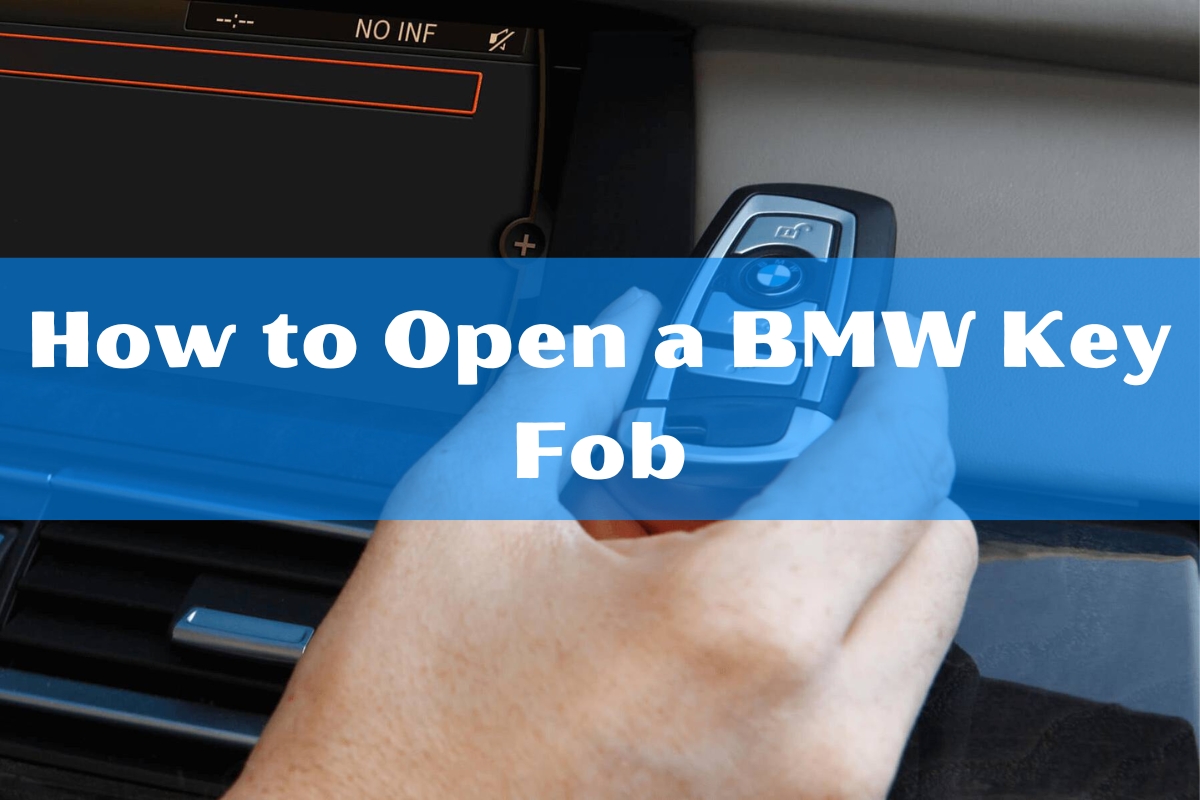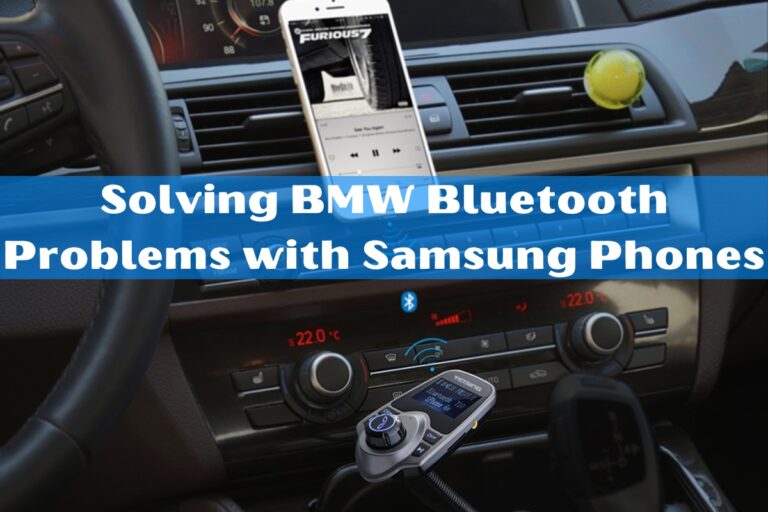How to Open a BMW Key Fob

As a BMW owner, having a functional key fob is essential for your daily driving experience. The key fob not only allows you to lock and unlock your vehicle, but it also provides access to various convenience features like remote start, trunk release, and more. However, there may come a time when you need to open your BMW key fob, whether it’s to replace the battery, reprogram the fob, or troubleshoot an issue.
In this comprehensive guide, we’ll walk you through the step-by-step process of opening a BMW key fob, so you can handle these tasks with confidence. We’ll cover the necessary tools, safety precautions, and provide clear instructions to ensure a successful outcome. By the end of this article, you’ll be equipped with the knowledge to take control of your BMW key fob and keep it in top working condition.
Understanding the BMW Key Fob
Before we dive into the opening process, let’s first understand the components of a BMW key fob. A standard BMW key fob is typically made up of several key elements:
- Key Blade: This is the metal portion of the key fob that can be used to manually unlock your BMW’s doors. The key blade is often hidden within the fob itself, and can be released by pressing a designated button.
- Lock/Unlock Buttons: These buttons allow you to remotely lock and unlock your BMW’s doors, trunk, and sometimes even windows.
- Panic Button: Pressing this button will activate the vehicle’s alarm system, drawing attention to your BMW in case of an emergency.
- Battery Compartment: Most BMW key fobs use a CR2032 or similar coin cell battery to power the remote functions. This compartment is typically located on the back of the fob and can be accessed by opening the key fob.
- Transponder Chip: This small electronic component inside the key fob communicates with your BMW’s security system, allowing the car to recognize the key and start the engine.
Understanding the key fob’s components will make the opening process much more straightforward. Keep in mind that the exact layout and features may vary slightly depending on your specific BMW model.
Steps to Open a BMW Key Fob
Now that you know the anatomy of a BMW key fob, let’s dive into the step-by-step process of opening it. Follow these instructions carefully to ensure a successful and safe outcome:
Step 1: Locate the Key Release Button
The first step in opening a BMW key fob is to locate the key release button. This button is typically located on the side or bottom of the key fob, and its purpose is to allow the key blade to be extracted from the fob.
Gently press the key release button using your thumb or index finger. You may need to apply a little pressure, but avoid using excessive force, as this could damage the button or the key fob.
Step 2: Extract the Key Blade
Once the key release button is pressed, the key blade should begin to protrude from the key fob. Carefully grasp the exposed portion of the blade and pull it out of the fob. Avoid yanking or pulling the blade forcefully, as this could damage the internal components.
Step 3: Access the Key Fob Compartment
With the key blade now removed, you should be able to access the key fob’s internal compartment. Locate the small slot or seam on the back of the fob, where the two halves of the housing meet. Gently insert the key blade into this slot and apply a small amount of leverage to pry the two halves apart.
Be careful not to use too much force, as this could crack or damage the key fob’s housing. If the compartment does not open easily, double-check that you’ve properly pressed the key release button in the previous step.
Reasons to Open a BMW Key Fob
There are a few common reasons why you might need to open your BMW key fob. Let’s explore them in more detail:
Changing the Battery
One of the most frequent reasons to open a BMW key fob is to replace the battery. Over time, the battery that powers the remote functions of your key fob will eventually run out of charge. When this happens, you’ll notice that the key fob’s range or responsiveness may decrease.
To replace the battery, simply open the key fob’s compartment, remove the old battery, and insert a new CR2032 or similar coin cell battery. Be sure to orient the new battery correctly, with the positive (+) side facing up.
Reprogramming the Key Fob
Another common reason to open a BMW key fob is to reprogram it, either to add a new key or to reset an existing one. This process may be necessary if you’ve lost a key, had one stolen, or want to give a spare key to someone else.
The reprogramming process typically involves pressing a combination of buttons on the key fob while it’s in the ignition. Refer to your BMW’s owner’s manual or contact a dealer for the specific steps required for your model.
Troubleshooting Key Fob Issues
If you’re experiencing issues with your BMW key fob, such as the buttons not responding or the fob not communicating with the vehicle, opening it up may be necessary for troubleshooting. This could involve checking for loose connections, inspecting the battery contacts, or even replacing the transponder chip.
It’s important to note that while you can perform some basic troubleshooting and maintenance on your BMW key fob, more complex issues may require the expertise of a professional BMW technician. If you’re unsure about the problem or don’t feel comfortable opening the fob, it’s best to seek assistance from a qualified service provider.
Tips and Precautions
When opening a BMW key fob, it’s essential to follow a few key tips and precautions to ensure a successful and safe outcome:
- Refer to the Owner’s Manual: Always consult your BMW’s owner’s manual for specific instructions on how to open the key fob for your particular model. The process may vary slightly between different BMW vehicles.
- Work in a Clean, Well-Lit Area: Choose a clean, well-lit workspace to open the key fob, as you’ll be working with small components that can easily be lost or misplaced.
- Handle the Key Fob Carefully: Avoid applying excessive force when prying open the key fob, as this could damage the housing or internal components. Work slowly and gently to avoid any mishaps.
- Beware of the Key Blade: Take caution when handling the key blade, as it can be sharp and potentially cause injury if not handled properly.
- Keep Track of Small Parts: When opening the key fob, be mindful of any small components, such as springs or buttons, that may become dislodged. Ensure you keep track of all parts to avoid losing them.
- Seek Professional Assistance if Needed: If you’re unsure about the process or encounter any issues, don’t hesitate to contact a BMW dealership or certified technician for assistance. Attempting complex repairs on your own could potentially cause further damage to the key fob.
By following these tips and precautions, you can safely and successfully open your BMW key fob and address any issues or maintenance needs.
Conclusion
In conclusion, opening a BMW key fob is a straightforward process that can be easily accomplished with the right knowledge and a bit of care. Whether you need to replace the battery, reprogram the fob, or troubleshoot a problem, the steps outlined in this guide will help you take control of your BMW’s key fob and keep it in top working condition.
Remember to always refer to your BMW’s owner’s manual, work in a clean and well-lit area, and handle the key fob with caution. If you encounter any issues or feel uncomfortable with the process, don’t hesitate to seek professional assistance from a BMW dealership or certified technician.
By mastering the art of opening a BMW key fob, you’ll be better equipped to maintain the functionality and convenience of your vehicle’s keyless entry system. So, the next time you need to access the inner workings of your BMW key fob, you’ll be ready to tackle the task with confidence.






